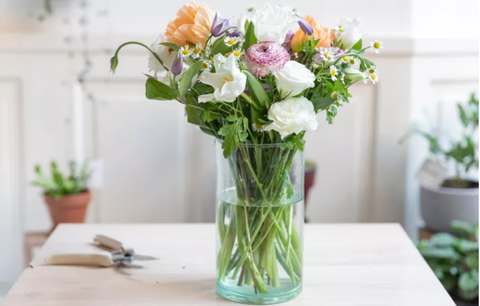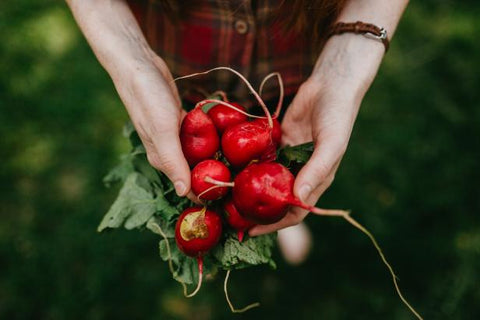Gardening holds a profound significance beyond merely cultivating plants; it's a therapeutic endeavor that nurtures both body and soul. However, embarking on this green journey can present financial challenges, especially for those mindful of their budgets. In this article, we delve into the importance of gardening, the hurdles faced by budget-conscious gardeners, and how to navigate them effectively.The following content also has some reference value for raised garden beds.
Assessing your gardening space
Before diving into planting, it's essential to assess your gardening space thoroughly. Evaluate the available space, whether it's a small balcony, a backyard plot, or a community garden plot. Understand the sunlight exposure in different areas of your garden, noting which spots receive full sun, partial shade, or full shade. Planning for efficient use of space ensures that every square inch is utilized effectively, maximizing your gardening potential.

Choosing budget-friendly plants
When it comes to selecting plants for your garden, there are plenty of budget-friendly options to consider. Instead of purchasing established plants, opt for seeds, which are more affordable and offer a wider selection of varieties. Choose perennial plants that come back year after year, reducing the need for annual replanting. Research low-maintenance plants that require minimal care and resources, saving you time and effort in the long run.
Soil preparation on a budget
Healthy soil is the foundation of a successful garden, but soil preparation can quickly eat into your gardening budget. Test your soil pH at home using DIY test kits or inexpensive soil meters to determine its acidity or alkalinity. Homemade soil amendments, such as compost, aged manure, or coffee grounds, enrich the soil with essential nutrients without breaking the bank. Utilize compost and organic matter to improve soil structure, fertility, and moisture retention, promoting healthy plant growth.
DIY gardening tools and materials
Gardening tools and materials can be costly, but with a little creativity, you can make your own DIY alternatives on a budget. Repurpose household items like old buckets, yogurt containers, or milk jugs as planters or seed starters. Build raised beds using inexpensive materials like untreated lumber, cinder blocks, or recycled pallets. Create inexpensive trellises and supports for climbing plants using bamboo stakes, twine, or repurposed wire mesh.
Water-saving strategies
Water is a precious resource, and conserving it in the garden can help reduce your water bill while promoting sustainable gardening practices. Install rain barrels to collect rainwater from your roof, providing a free and eco-friendly source of irrigation for your garden. Implement drip irrigation systems to deliver water directly to the root zone of plants, minimizing water waste through evaporation or runoff. Mulching with organic materials like straw, wood chips, or shredded leaves helps retain soil moisture, reducing the need for frequent watering.

Natural pest control methods
Dealing with pests can be a challenge for gardeners, but there are plenty of natural and cost-effective methods for pest control. Companion planting involves interplanting beneficial companion plants that repel pests or attract beneficial insects. Make homemade insect repellents using ingredients like garlic, chili pepper, or neem oil to deter common garden pests. Attract beneficial insects like ladybugs, lacewings, and predatory wasps by planting flowers that provide nectar and pollen, creating a balanced ecosystem in your garden.
Utilizing recycled materials in the garden
Recycling and repurposing materials in the garden not only saves money but also reduces waste and promotes sustainability. Repurpose containers like plastic bottles, tin cans, or old tires as planters or seedling pots, giving them a new lease on life. Recycle garden waste like leaves, grass clippings, and kitchen scraps to create nutrient-rich compost for your garden beds. Build structures like trellises, arbors, or raised beds from salvaged materials like pallets, scrap wood, or discarded metal, adding character and functionality to your garden space.
Seed-saving techniques
Saving seeds from your garden harvests is a thrifty way to ensure a continuous supply of plants for future seasons. Collect and store seeds from your favorite vegetables, fruits, and flowers, labeling them carefully for future use. Share seeds with other gardeners through seed swaps or local gardening communities, expanding your plant variety and fostering a sense of community. Consider starting a seed exchange with neighbors or joining a local seed-saving initiative to promote biodiversity and preserve heirloom varieties.
Joining gardening communities and initiatives
Gardening is a communal activity that brings people together, sharing knowledge, resources, and experiences. Participate in seed swaps, plant shares, or garden tours organized by local gardening groups or community organizations. Engage in community garden projects, volunteering your time and skills to help maintain shared garden spaces and green areas in your neighborhood. Learn from experienced gardeners through workshops, classes, or online forums, gaining valuable insights and tips to improve your gardening practice.
Sustainable gardening practices
Embrace the principles of organic gardening by eschewing synthetic fertilizers and pesticides in favor of natural alternatives that promote soil health and biodiversity. Close the loop on organic waste by composting kitchen scraps and yard trimmings, reducing landfill waste while enriching your soil and reducing the need for external inputs. Support local ecosystems by incorporating native plants into your garden, providing habitat and sustenance for native wildlife while conserving water and reducing maintenance.
Planning for successive harvests
Maintain soil fertility and prevent nutrient depletion by implementing crop rotation, and alternating plant families to optimize soil health and pest management. Extend your growing season with cold frames or cloches, protecting tender plants from frost and allowing for earlier planting in spring and later harvests in fall. Preserve surplus produce through canning, freezing, or drying, ensuring a steady supply of homegrown goodness long after the growing season ends.
Thrifty garden maintenance tips
Regular maintenance is essential for keeping your garden healthy and productive, but it doesn't have to break the bank. Stay on top of weeding and pruning to prevent weeds from taking over and plants from becoming overcrowded. Use homemade remedies like garlic spray or soap solution to treat common plant ailments like aphids or fungal diseases. Invest in quality tools that are durable and long-lasting, saving you money in the long run by reducing the need for frequent replacements.

Conclusion
Gardening on a budget is not merely about cutting costs; it's a journey of creativity, resourcefulness, and stewardship. By implementing these money-saving tips and embracing a thrifty mindset, gardeners can cultivate flourishing green spaces while nurturing their wallets and the planet. Whether you're a seasoned gardener or a novice enthusiast, let frugality be your guiding principle as you embark on your spring gardening adventure.









